Every season, the story seems to be the same — the Toronto Maple Leafs consistently perform well during the regular season, comfortably keeping themselves in a playoff spot year-round, only to fall short in the playoffs. This season, though, their regular-season success is faltering. They sit in the first wild-card spot, though they were expected to frontline the Atlantic Division again. Their problem? Depth scoring.
General manager Brad Treliving was brought in to pilot the team in May 2023, and his biggest priority was adding what he called “snot” or grit. The narrative was that the Maple Leafs were too “soft” to compete for the Cup and that their lack of grittiness was holding them back from postseason success. After all, hits increase in the playoffs.
Whether or not that’s the case — that grit means postseason success — is beside the point. There’s nothing inherently wrong with gritty players, but those players need to perform on top of their physical play. Skilled grit is a coveted asset in the league, with players like Timo Meier, J.T. Miller, Tom Wilson, and the Tkachuk brothers revered for holding their own physically while providing offense as well.
That’s where Toronto has gone wrong. The grit they have added and targeted over the past few seasons has been somewhat skillless. Rather than focus on adding depth scoring, regardless of physicality, the team has focused far too much on the latter, and it has cost them dearly.
Core Four Worsening This Season
The Maple Leafs’ “Core Four” — Auston Matthews, Mitch Marner, William Nylander, and John Tavares — have provided most of the team’s scoring recently. While these players are phenomenal — excluding Tavares’ struggles this season — it’s a massive issue. In the two previous seasons, Toronto’s expected goals share (xGF%) when any of the Core Four were on the ice sat at about 57%. This season, their xGF% has dropped to 52.8%.
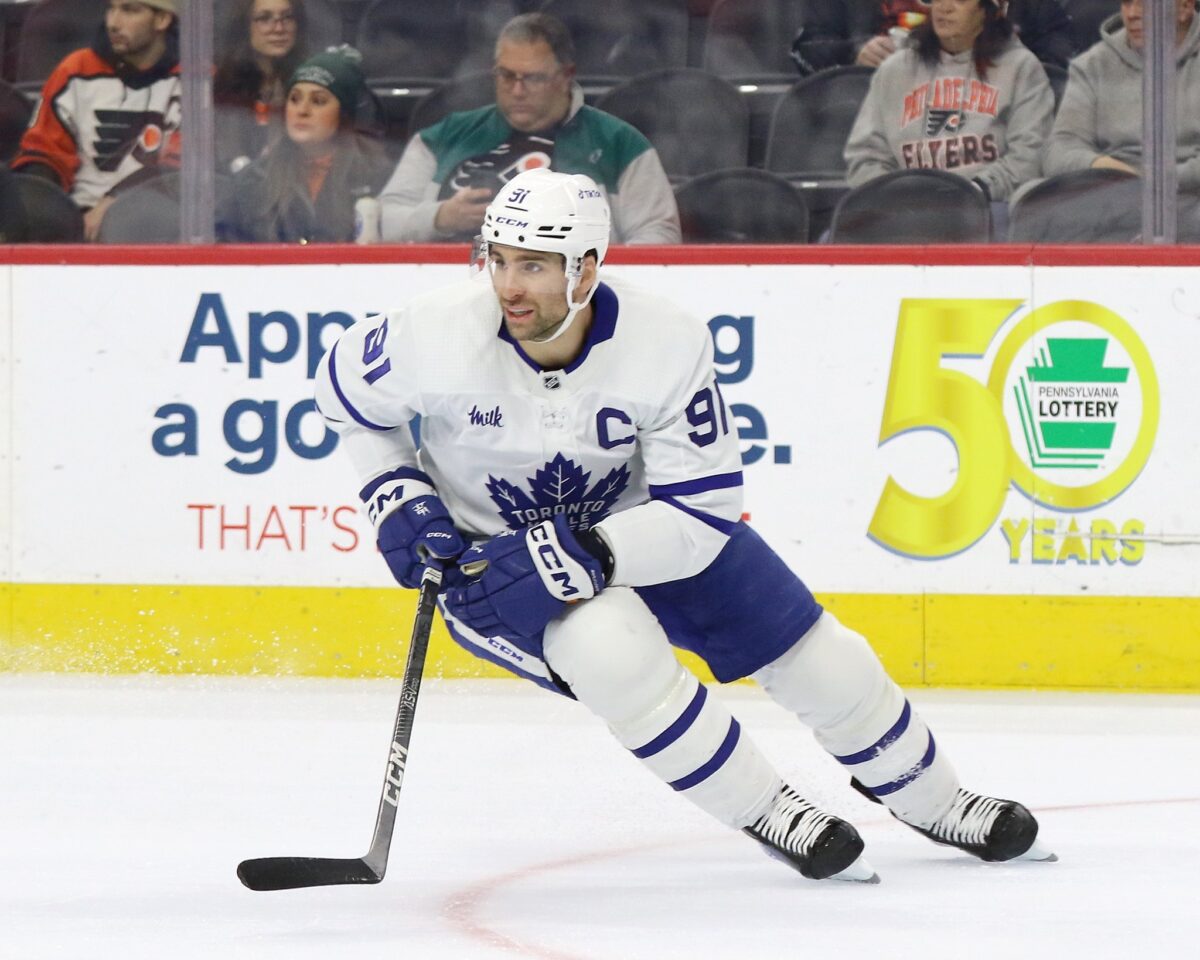
What’s more, is that the team around them is also worse — whereas the Maple Leafs had an xGF% of over 50% when the Core Four was not on the ice last season, they’re rolling with 45% this year, meaning the team is significantly more dependant on the Core Four, and they haven’t been as good this season as they have in years prior (from “16 Stats: Middling Maple Leafs, injured Golden Knights and anemic Sabres,” The Athletic, January 18, 2024).
It’s not their fault. Increased dependence on an aging Tavares isn’t a recipe for success. It does beg for a response from the front office, though. Because they’re having a down year, it’s more imperative than ever for the Maple Leafs to address the depth scoring issue that’s plagued them for years. It was almost excusable a couple of seasons ago when the Core Four were the most threatening group of skaters in the NHL, but they aren’t in 2023-24.
New Signings Not Working Out
During the offseason, the Maple Leafs offered contracts to career bottom-six players Ryan Reaves, Noah Gregor, Pontus Holmberg, and David Kampf, middle-sixers Max Domi and Tyler Bertuzzi, and defensemen John Klingberg, Simon Benoit, and William Lagesson.
Starting with who should have had the most impact on the team — Domi and Bertuzzi — the two were cited by Treliving as having the snarl and scoring ability that they needed from their complementary players. After all, Domi was fresh off a 20-goal, 56-point season and Bertuzzi scored 30 goals in his last healthy season. Plus, neither one of them is afraid to be a physical presence or get in the opposition’s face. All in all, they were both signed to one-year contracts for a combined $8.5 million.
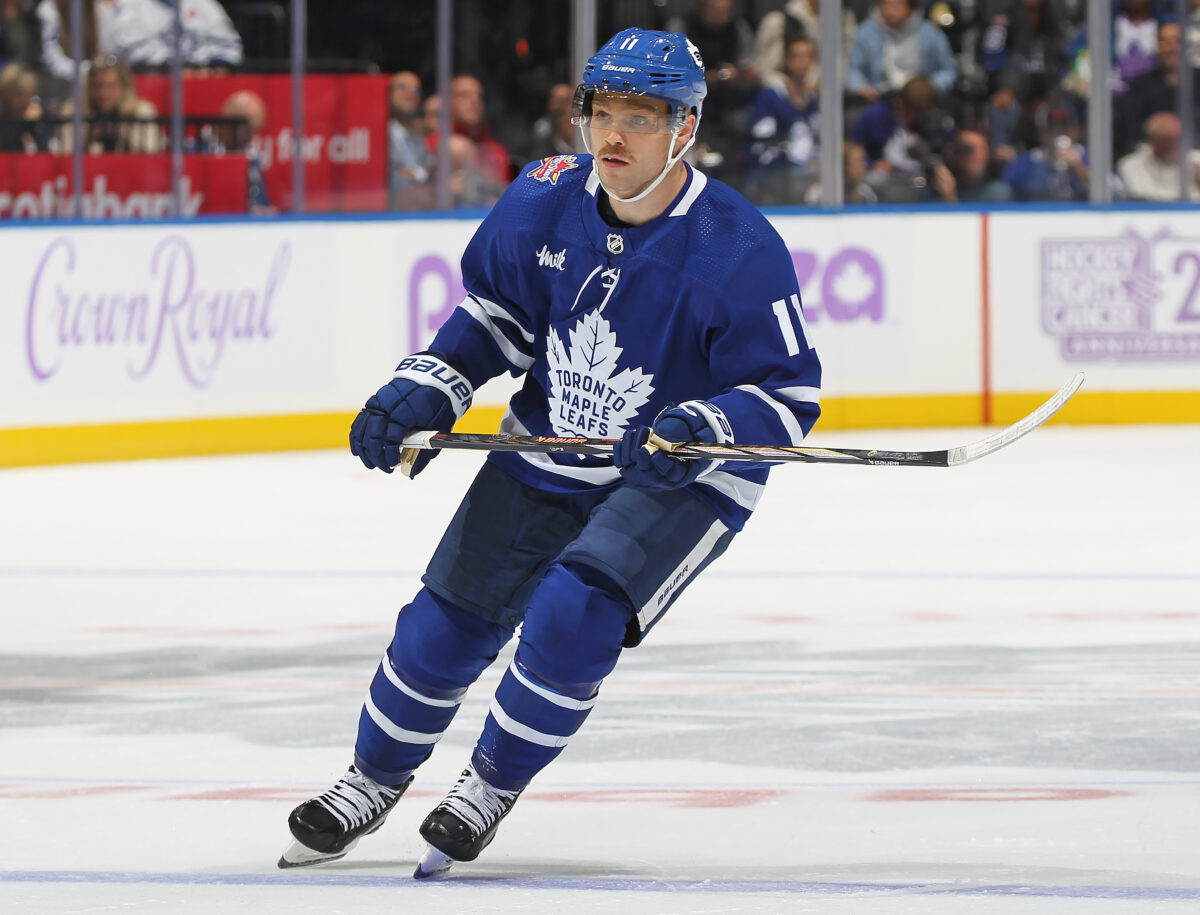
Neither one has performed particularly well, though. On the season, the two have scored a combined 10 goals in 93 games. Bertuzzi and Domi have, historically, been more than capable of putting up goals, and the two are pacing for ten and seven, respectively — it’s unacceptable.
Nothing is more disappointing than the career bottom-six players who were signed, though. Reaves, who makes his money with his physicality, was bafflingly signed to a three-year contract in July. He has been unequivocally the worst forward in the NHL, boasting an impressively unimpressive xGF% of 36.87% while tallying two points in 22 games.
Kampf was signed to a ridiculous four-year, $9.6 million contract while showing off a 37.79% xGF% and eight points in 46 games in a fourth-line role. Holmberg, the least offensive contract signed in the offseason (two years at $800,000 annually), has a very respectable 53.69% xGF%, but he spent a good chunk of his time in the top six, and five of his eight points have come while playing alongside Matthews.
Finally, there’s Gregor, who was given a one-year deal at $775,000 and has put up 10 points and a xGF% of 39.76% so far this season. Outside of Holmberg, who has yet to prove much of anything whilst not playing in the top-six, every one of these depth signings has been disastrous.
Related: Maple Leafs’ 2024 Trade Deadline Strategy: No Move Is Best
Finally, there’s the defensive depth signings. It’s hard to complain about Benoit and Lagesson — they were both signed to league-minimum contracts for this season only, and they both have sturdy enough underlying statistics for their roles. The big issue was Klingberg’s one-year, $4.15 million contract. The one player that Treliving went after in free agency that wasn’t gritty was one who has historically been outright dominated at 5v5 and is widely regarded as one of the worst defensive defensemen in the NHL — though he’s out for the season after undergoing hip surgery. Still, wouldn’t it have been nice for Treliving to use that cap space on a useful player or two?
Letting Depth Scoring Go in Recent Years
On top of the poor cap management with free-agent signings, the Maple Leafs have let go of some players who would have provided that depth scoring and skill that they so desperately need. At this point, there is a clear pattern of being unable to identify players who would provide them with secondary scoring and skill rather than just grit.
Jared McCann
Perhaps the biggest stinger in recent history was letting Jared McCann go in the 2021 NHL Expansion Draft. Maple Leafs GM at the time Kyle Dubas opted to use the expansion draft protection model that allowed Toronto to protect more than three defensemen, turning down the option to protect seven forwards — he presumably wanted to protect all of Morgan Rielly, Jake Muzzin, TJ Brodie, and Justin Holl. In doing so, management left forward Alex Kerfoot unprotected, but to keep him in the Maple Leafs’ system, Dubas had to make a more appealing player available for selection. To do so, he made a trade with the Pittsburgh Penguins to acquire McCann, who was coming off of back-to-back 14-goal seasons.
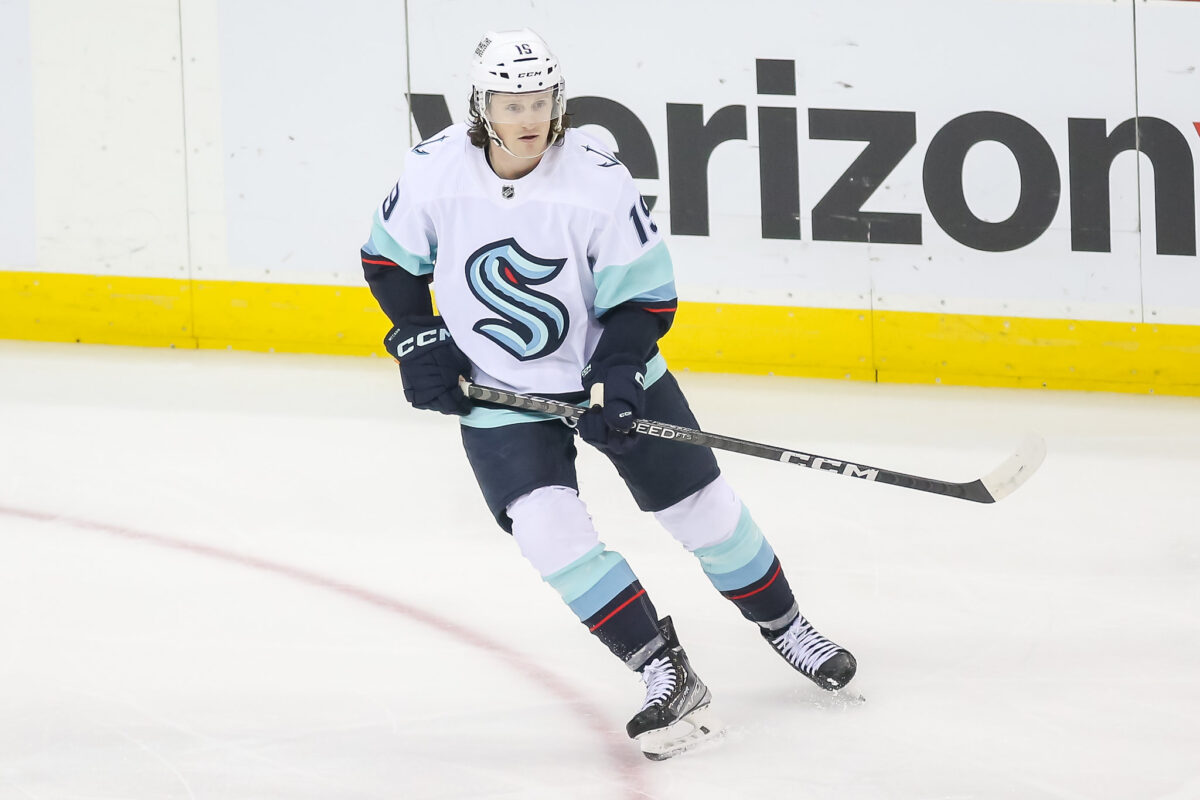
Of course, Seattle picked McCann, who then put up 67 goals and 120 points in the next two seasons. So far this season, McCann has 20 goals and 35 points in 48 games while only making $5 million per year. Not only that, but McCann has been a two-way tool for Seattle, posting positive impacts on both offence and defence and playing both special teams units. Knowing now that Muzzin might never play another game in the NHL again and that Holl moved on from Toronto to play for the Detroit Red Wings, it’s clear that Dubas should have opted to improve the depth scoring by protecting seven forwards, including McCann.
Ilya Mikheyev
Following the 2018-19 season, many eyes were on which NHL squad then-KHL star Ilya Mikheyev would choose to play for, and sure enough, Mikheyev picked Toronto as his destination. Over the next three seasons, he scored 36 goals and 72 points in 178 games, culminating in a 21-goal campaign in 2021-22. In the summer of 2022, after not receiving an extension from the Maple Leafs, Mikheyev signed a four-year, $19 million contract with the Vancouver Canucks.
Since joining the Canucks, he has put up 23 goals and 51 points in 91 games and played himself into a top-line role playing alongside Elias Pettersson and newly-traded Andrei Kuzmenko. This season, he has a 53.85% expected goals share (xGF%), good for sixth on the team among players with at least five games played. He’s fourth on the team in individual 5v5 expected goals (ixG) with 8.17, first in individual high-danger 5v5 scoring chances (46), and seventh in 5v5 points (22).
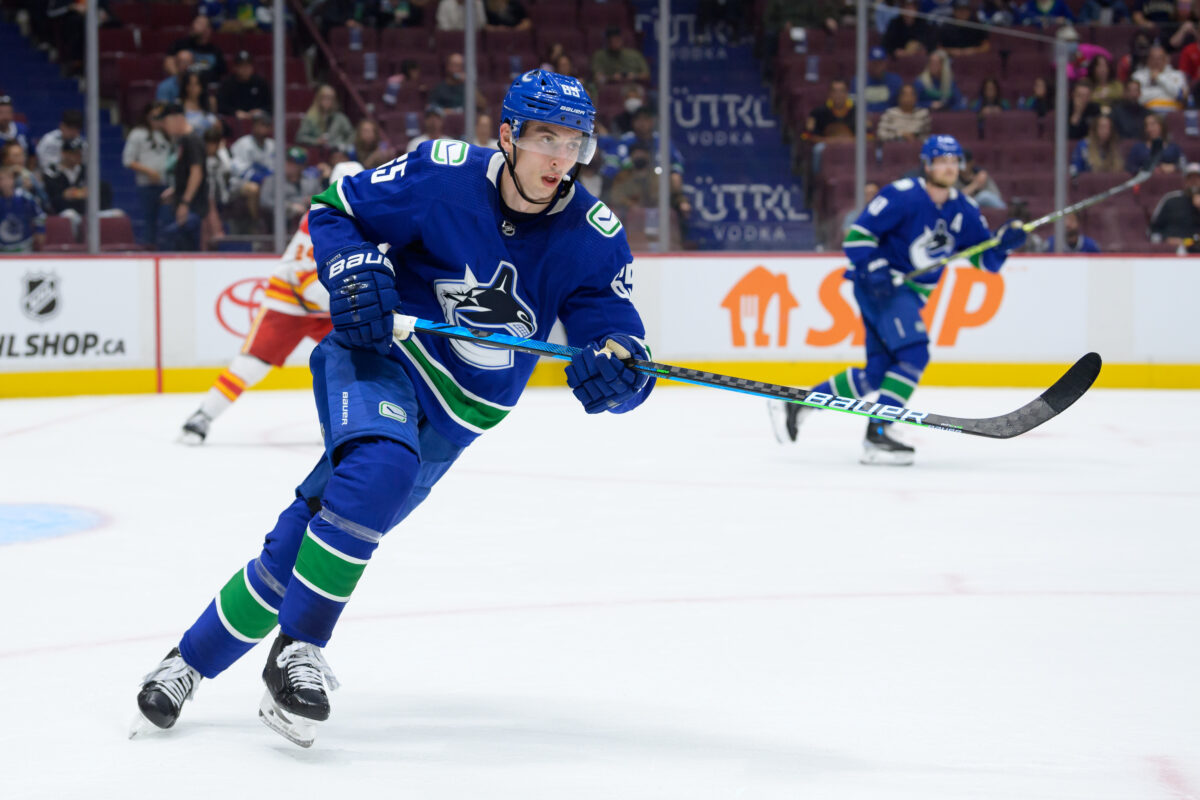
For a team dedicated to acquiring gritty players, not re-signing Mikheyev was pretty perplexing. In his tenure with the Maple Leafs, he doled out 128 hits. He’s precisely the kind of player that the team should have coveted — skilled and gritty, and unafraid to put his body on the line in a board battle to gain possession of the puck.
Pierre Engvall
Yet another depth forward that the Maple Leafs are aching for is New York Islander Pierre Engvall. The 27-year-old Swede was traded to the Islanders (by the Maple Leafs) in February 2023, netting the team a third-round selection in the 2024 NHL Draft. It’s yet another mind-bending move by Toronto, who could use his speed and scoring touch in the bottom six right now.
He, much like Mikheyev, isn’t known for his physicality but does not shy away from using his body to create separation along the boards. After putting up back-to-back 15-plus goal seasons, he was offered a seven-year contract with the Islanders worth $3 million annually — a more-than-fair price tag for the former seventh-round selection. It’s a shame that Dubas was unable to identify his potential value to the team.
Rasmus Sandin and Erik Gustafsson
Not all depth scoring comes from forwards, and Rasmus Sandin is a testament to that. The 2018 first-round selection was traded to the Washington Capitals last season in exchange for a 2023 first-round pick and defenseman Erik Gustafsson. Sandin had received some fan-centric scrutiny for years and had never really found a place on the Maple Leafs’ blue line despite having high potential, first-round pedigree, and an extremely strong underlying impact at 5v5, and thus Dubas thought the best move for both sides was a trade.
It’s still mind-boggling, though, that he was moved in the first place, considering how good he was on the blue line for the Maple Leafs, albeit he was receiving some sheltered minutes. From his very short 2020-21 season — one in which he only played nine games — until being traded to the Capitals, Sandin’s xGF% were outright elite, sitting at 55.05%, 58.43%, and 57.85%. The points never quite lived up to expectations, with Sandin capping out at 20 points in Toronto — probably due to his lack of time on ice.
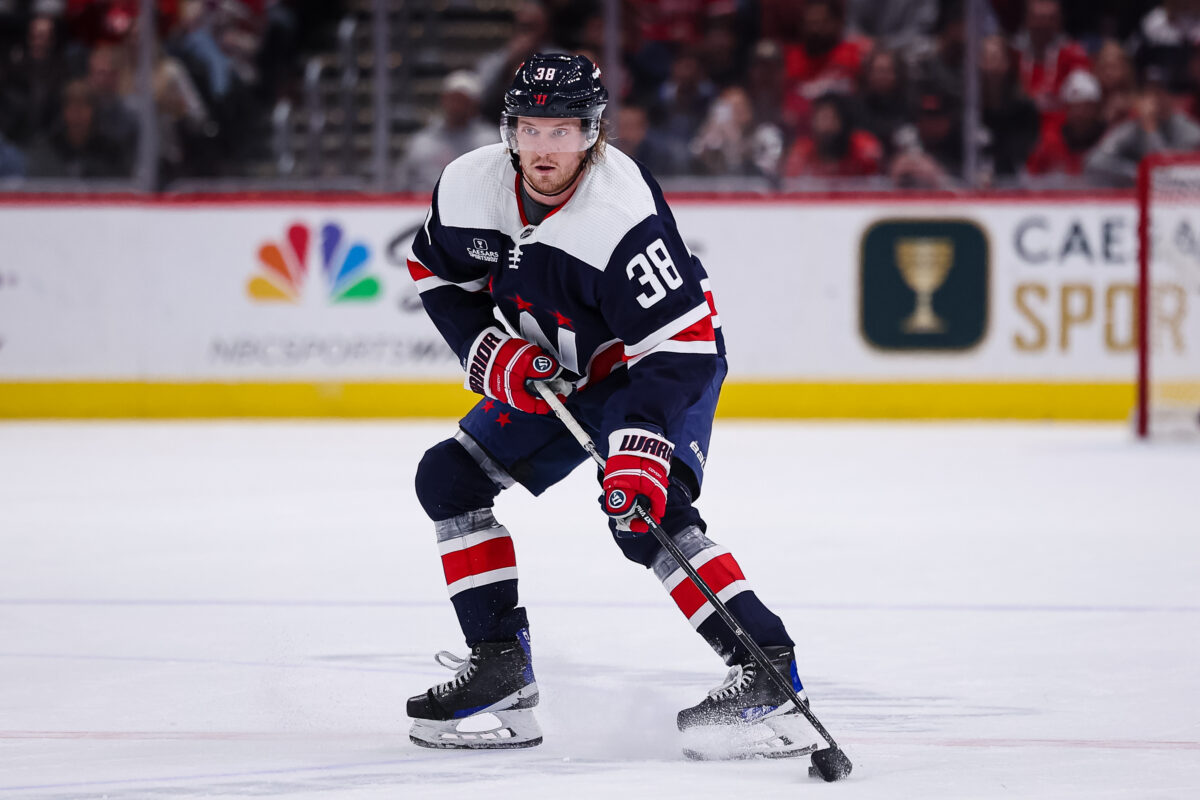
Once he moved on to Washington, however, he was immediately thrust into a top-pairing, second power-play unit role, and the points followed. In his 19 games with the Capitals in 2022-23, Sandin scored three goals and 15 points total while averaging over 22 minutes a night. His impact dipped by proxy of playing on a weaker squad and no longer playing in a sheltered, third-pair role, but he’s still been a sturdy addition for the Capitals, and he would certainly be nice for the Maple Leafs’ back-end depth right about now.
As if the Sandin situation could have gotten any worse, the Maple Leafs chose not to invest in Gustafsson, the player they received from Washington. Gustafsson was a sneaky-good add for Toronto — he was quietly putting up a 50-point pace in a second-pair role with the Capitals at the time of the trade. The fourth-round selection from 2012 had a 53.86% xGF% on the season at the time of the trade, and the Maple Leafs rewarded his prowess in Washington by cutting his time by nearly five minutes per night and letting him walk to the New York Rangers in free agency rather than signing him for the near-league-minimum deal that he got in the Big Apple. Gustafsson has gone on to put up 23 points in the Rangers’ first 48 games, even stepping in for star blueliner Adam Fox when Fox went down with an injury. Meanwhile, the Leafs’ blue line could use a bit of a bolster, especially on the left side where Gustafsson plays.
A Pattern of Trading for Poor Assets
In addition to signing the wrong kind of grit and letting talented depth scoring options go via trade or free agency, the Maple Leafs have established a pattern of trading for the wrong players — those with grit but not enough skill to be worthwhile endeavours for the team. Over the last four seasons, the Maple Leafs have spent considerable assets on players like Luke Schenn, Colin Blackwell, and Nick Foligno, all of whom have the physicality and grit nailed down but lack the real skill to be depth contributors to the team.
Schenn was acquired from the Canucks last season in exchange for a 2023 third-round pick. To the naked eye, he’s a valuable asset — he’s 6-foot-2, 225 pounds, and is completely unafraid to throw his weight around. When he was traded to the Leafs, he had already doled out an astounding 258 hits in just 55 games, averaging almost five hits per game. The problem with Schenn was that he always used the body at the expense of playing the game effectively.
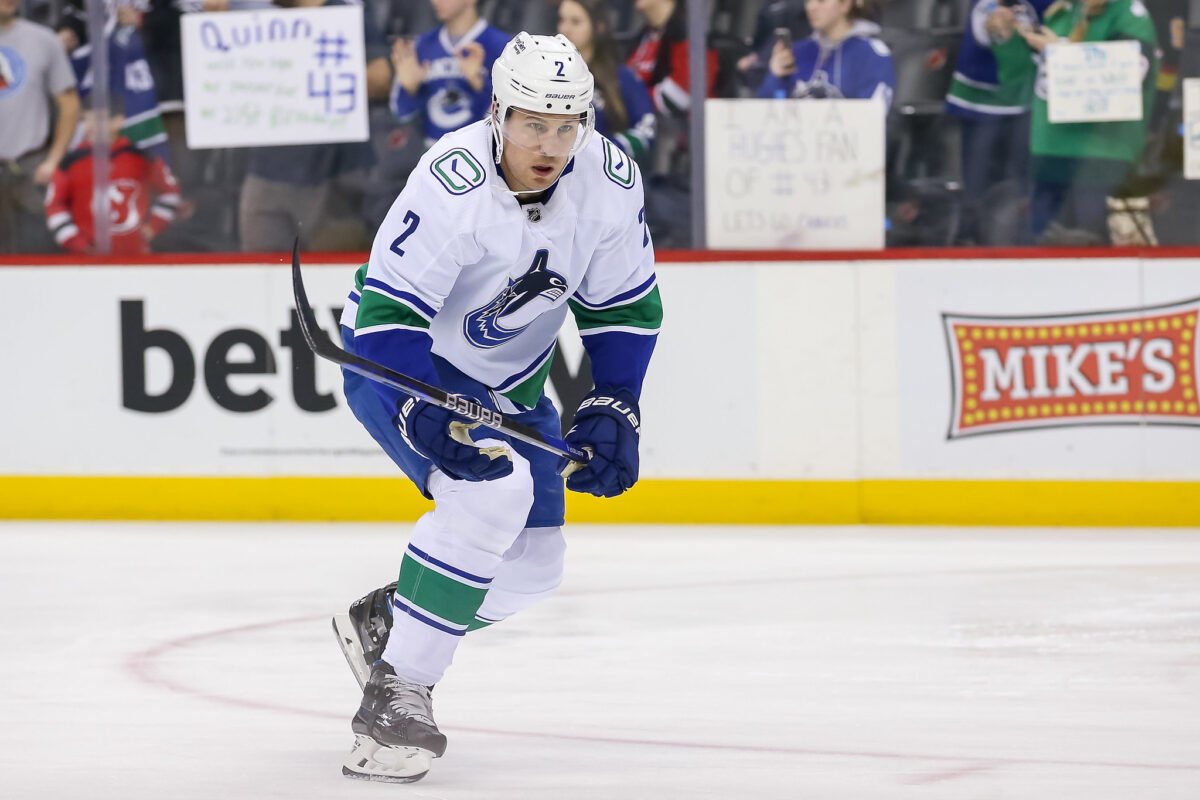
With a player like that, a shutdown, physical presence, the points were never going to be there. Still, it would have been nice for the Leafs to have acquired a shutdown defenseman who could shut down the opposition, especially for the not-inconsequential price of a third-round pick, but the Leafs got the opposite with Schenn. Among defensemen who played at least 10 games for Toronto last season, Schenn gave up the most expected goals against per 60 minutes (xGA/60) with 3.18 and sported a xGF% of 46.87%.
In March 2022, the Leafs acquired defenseman Mark Giordano and forward Blackwell from the Seattle Kraken in exchange for second-round picks in 2022 and 2023 and a 2024 third-rounder. I won’t harp on the Giordano part of the trade — the then-38-year-old was a solid addition and has been a sturdy presence on the blue line ever since. The problem is paying assets for Blackwell, something that the front office simply didn’t need to do — they easily could have spent less to solely acquire Giordano.
Regardless, Blackwell, like the rest of the players mentioned, tosses his body around at the expense of playing meaningful hockey. He has moments, but for the most part, he’s not particularly effective on either side of the ice. After being acquired, Blackwell put up two goals and three points in 19 games as a Leaf while controlling only 42.18% of the xG share. Thankfully, the Leafs decided not to pursue him as a free agent in the off-season.
Foligno is the final name I’ll mention as a prime example of the Leafs historically targeting the wrong type of grit. He was acquired in April 2021 as part of a three-team trade. The Leafs shipped out a 2021 first-rounder as well as fourth-round selections in 2021 and 2022 for Foligno and then-AHLer Stefan Noesen, who only played one game as a Leaf. Effectively, the trade was just for Foligno.
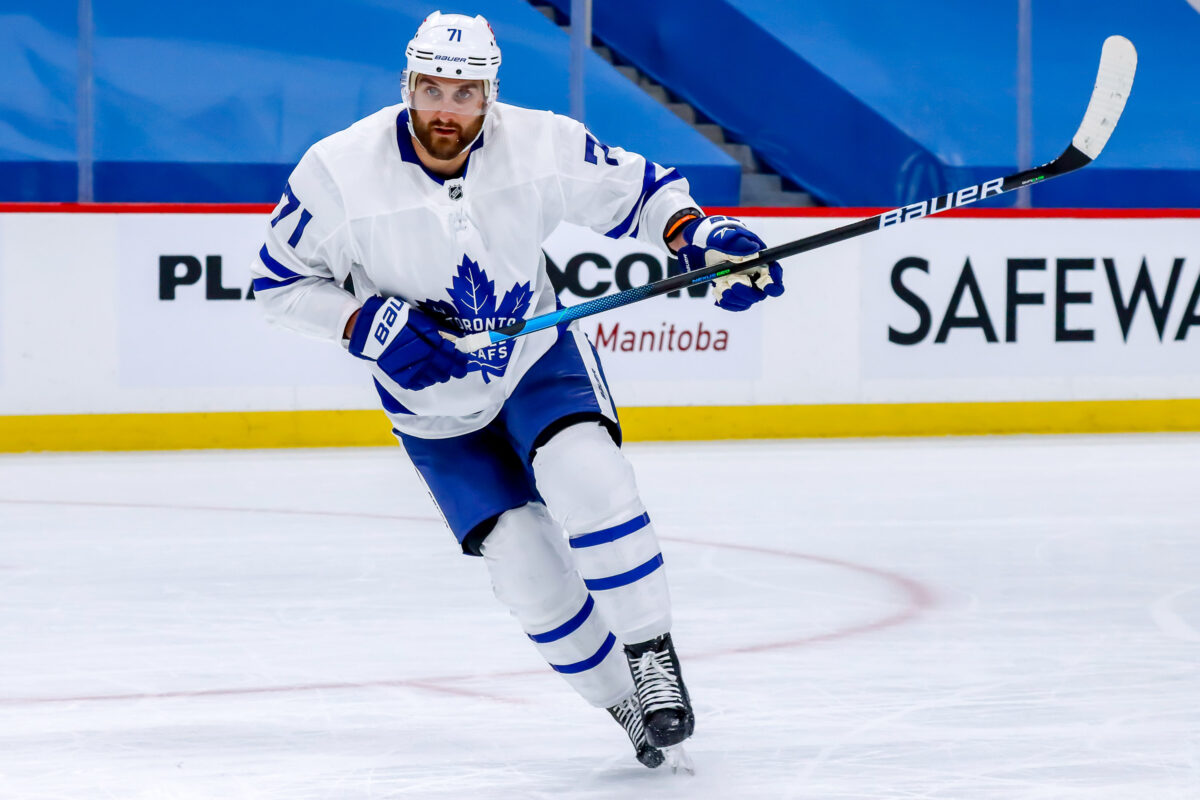
Much like Schenn and Blackwell, Foligno historically uses physicality to compensate for a lack of effectiveness on the ice. He hasn’t recorded fewer than 100 hits in a season since 2012-13, a lockout campaign in which Foligno only played 45 games (and recorded 99 hits). He used to be an effective player, having scored 73 points in 2014-15 with the Columbus Blue Jackets. Those days were well past him at the time of the trade, though, and he only put up four assists in his short stint with Toronto while recording a 49.67 xGF%.
This season, the Leafs are rumored to be interested in players like Chris Tanev and Adam Henrique, players who do have grit but more importantly, are very good hockey players. If they want to compete for the Cup, moves like this will bolster their chances, without forfeiting skill in pursuit of unneeded physicality.
Maple Leafs Must Address Depth Scoring to Compete
If there’s one thing that the Leafs simply need to do in order to right the ship and compete for the Stanley Cup, it’s acquire some competent depth scoring. Their bottom six simply isn’t cutting it, and it’s proving to be costly this season. If the goal is still to add some sandpaper, there’s a right way to go about it — Treliving has to target players who are unafraid to use their bodies but who are also capable of putting up points.
Players like Nic Dowd, Arthur Kaliyev, Jordan Greenway, and Jack Roslovic are reportedly on the trade block, and should undoubtedly be on Treliving’s radar. All four players are unafraid to throw checks and use their bodies as a means to create separation and push play up-ice, but all four can also get on the scoresheet using skill and finesse. If management truly wants to address the depth scoring issue that’s prevented their success in the postseason, any one of them should be atop their target list.
